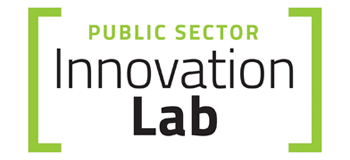
The challenge statement
To understand existing processes to enable the Construction Industry Training Board (CITB) to better focus its effort on achieving its main goal of supporting training and development in the construction industry across South Australia.
The situation
The CITB was created by the Construction Industry Training Fund Act 1993 to focus on:
- providing access to subsidised training for apprentices, their employers and workers in the construction industry
- promoting and supporting careers in construction
- advising the SA Government on industry training
- supporting training, innovation, research and planning
- attracting future workforce entrants through vocational training in schools.
The CITB funds its activities via the Construction Industry Training Fund Levy, which is administered by the Board and is applied to building and construction projects in South Australia, valued at over $40,000.
CITB leadership recognised the need to focus effort on the outcomes the organisation achieves and supports, in particular, in respect to training and career development rather than focusing its effort on collecting the levy itself. The view was that existing processes placed too much focus and effort on levy collection which they wanted to transition to value-adding work.
With the recent change in key leadership roles, including Chief Executive Officer, the Board wanted to take the opportunity to review and refresh their processes. They recognised the need to apply new thinking and challenge the efficiency of current processes, and therefore approached the Innovation Lab.
Partners
Construction Industry Training Board (CITB).
The project
The agreed approach focused on engaging staff across the CITB to collaboratively build a genuine picture of the steps that make up a number of key processes within the CITB.
These processes would allow for lean analysis to be undertaken to form the basis for next steps and recommendations.
It was agreed that three processes would be mapped:
- the levy collection process
- the Field Officer role
- the Aboriginal Workforce Development Initiative.
The three different groups (with a number of overlaps in representation across groups) were brought together, along with executives, to work through and map the processes.
The approach allowed for wide-ranging and challenging discussion, which helped identify areas of mutual concern and reflected divergent views on some process steps.
As the work progressed, there were valuable discussions and insights on who had responsibility for tasks and what the drivers behind the tasks were e.g. legislation, policy or whether it was customary practice.
The details of the completed process maps were presented back to a number of workshop attendees to ensure they reflected the discussion and the viewpoints provided.
The outcome
Process mapping across each of these areas was undertaken using lean methodologies. Subsequent analysis was presented to the Board in September 2018.
The CITB executive responded positively to the process mapping and analysis that was provided by the Innovation Lab and has expressed interest in proceeding with a number of the recommendations put forward by the Lab as part of their business planning process for 2019.
The Innovation Lab has offered to remain connected with the CITB and to engage in the future to review how the changes have been implemented and explore the potential to review further areas of focus.
Insights
Problem Space
- The inclusion of members of the Board’s executive team in the sessions helped to demonstrate the leadership commitment to the project, however this also created a need for an environment where staff felt they could contribute openly and honestly to the discussion.
Capability, mindset and capacity
- The executive and staff were challenged on why tasks were performed. Doing this as a team created a greater understanding for the work and responsibilities people had.
- It also introduced objectivity, allowing current processes to be challenged and effort directed towards greater efficiency and impact.
The System
- Having the leadership be open to new ways of thinking helps to create the conditions for innovation within an organisation.
Impacts
Problem Space
- A number of potential improvements to processes were highlighted to better align the business to strategic purpose and goals.
- Innovation Lab supports accelerated progress of the work, assisted in focusing on a firm evidence base, provided a clear structure to the outputs and also brought an impartial, external lens to discussions.
- Helped create actionable solutions by:
- using desirability, feasibility and viability as a test to assess potential solutions
- presenting the evidence clearly, consistently and concisely
- incorporating the executive team into the discussion to drive follow up.
Capability, mindset and capacity
- The process mapping gave CITB staff and executive a view of the current state that was visually engaging, and generated data and evidence to drive decision-making.
- Provided staff with hands-on experience of the use of lean methodologies.
The System
- The Innovation Lab was able to support the executive to look beyond the status quo and existing parameters.

